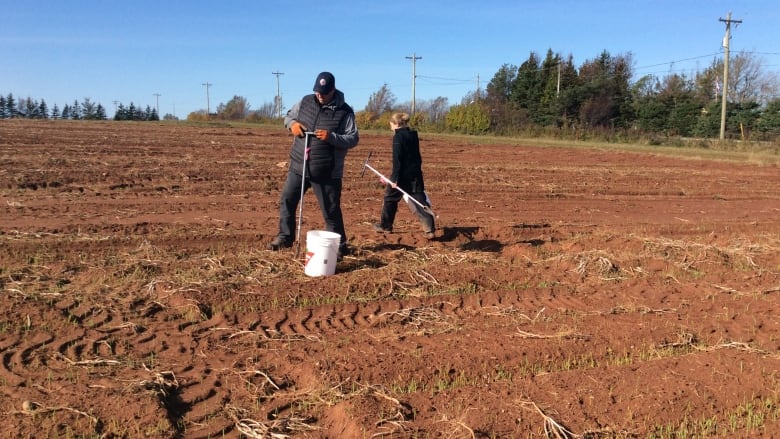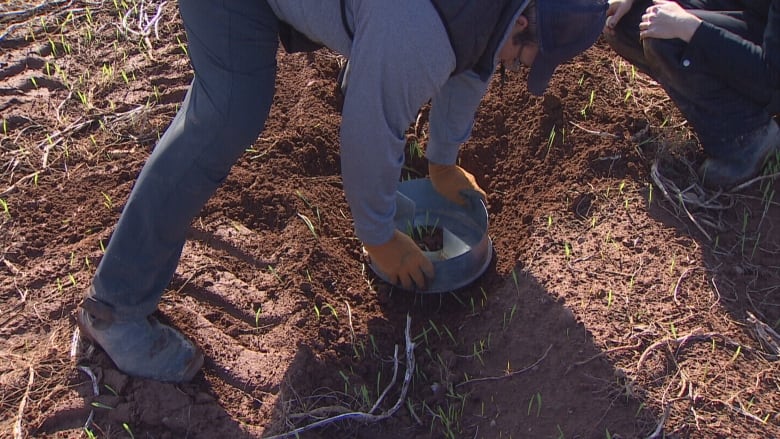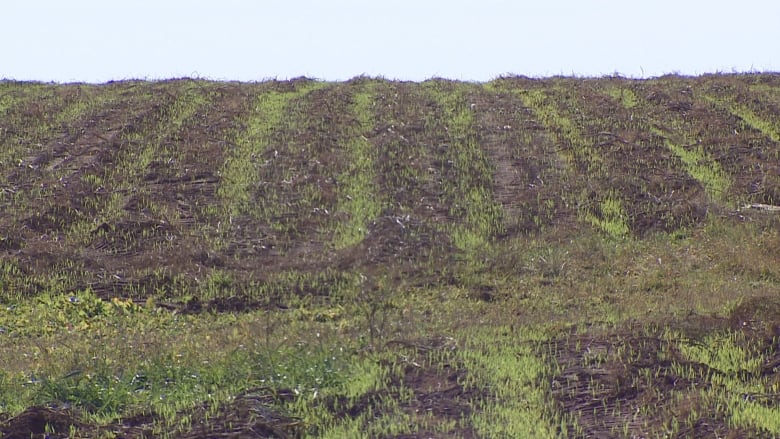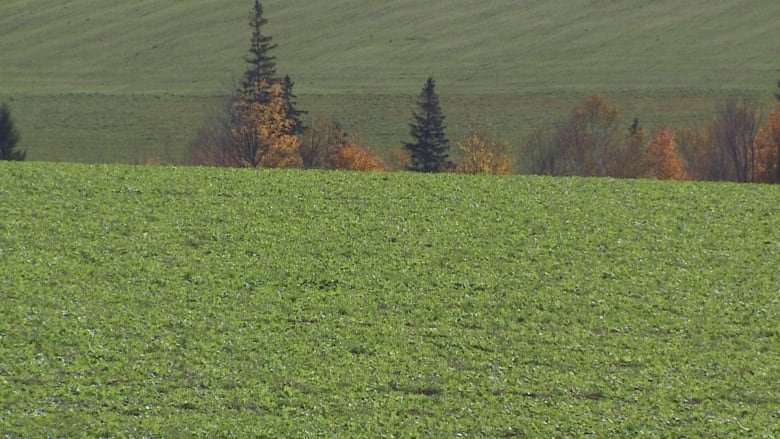The P.E.I. Potato Board, potato growers and watershed groups across the Island are teaming up on some new research about cover crops this fall.
It's part of a growing interest in cover crops, which are planted to hold the soil in place, in part to stop soil erosion, or prevent what is called red fields during the winter where wind blows snow and soil across barren fields.
"I already see it driving around, I've seen a lot more green fields or fields where they're just poking through the ground," said Ryan Barrett, research and agronomy co-ordinator with the board.

The research is part of a new $2.4 million project called the Living Laboratories Initiative, announced in August.
"There's lots of growers that are already using cover crops on some portion of their acreage and I think there's a lot of acknowledgement in the grower community of the value of cover crops," Barrett said.
"But we're trying to demonstrate those better, show the numbers on how they improve soil health, how they prevent soil erosion, how we can, in some cases, actually increase yields the following year by doing cover crops before potatoes."

'The More Acres, the Better'
The goal is to build up the research about cover crops on P.E.I., Barrett said.
"Probably the most sensitive time of year for soil erosion is over the winter," he said.
"In some cases, we're using crops that will die out over the winter and that'll be easy to work in the spring so that it's not slowing down planting."
Climate change is also making it easier to plant cover crops on P.E.I., he said.
"Last year was a bit of the exception, but generally the trend has been we're seeing warmer falls into late October early November and that gives a little more time to establish cover crops," Barrett said.
"It's not necessarily achievable to get a cover crop on every acre, but the more we can do and the more acres we can cover, the better."
Barrett said many growers are finding ways to plant cover crops so it's not too much extra work, including spreading seed before digging up potatoes so the seed is worked into the soil, and putting a seeder on their tillage equipment.

More Efficient and Cost-effective
Potato farmer Vernon Campbell is part of the research project on cover crops this fall.
"Seeking new ways, more efficient ways of doing it, more cost-effective ways because at the end of the day it all comes out of our pocketbooks," said Campbell, who farms in Grahams Road, P.E.I., near Kensington.
"Every acre that's done more than last year is a step forward. "
Johanna Kelly, with the Kensington North Watersheds Association, is helping to connect potato growers with scientists.
"We've been working with farmers in our area for the last 10 years toward best management practices that are mutually beneficial," Kelly said.
"I think we're seeing enormous uptake Island-wide with cover crops."
Kelly will be sampling for nutrient analysis, erosion and biomass monitoring, until December.
"This project has mutually beneficial outcomes for both potentially for farmers as well as for the environment," Kelly said.
Barrett said researchers hope to have some information to share after every season, but it will take a few years to get good data.
